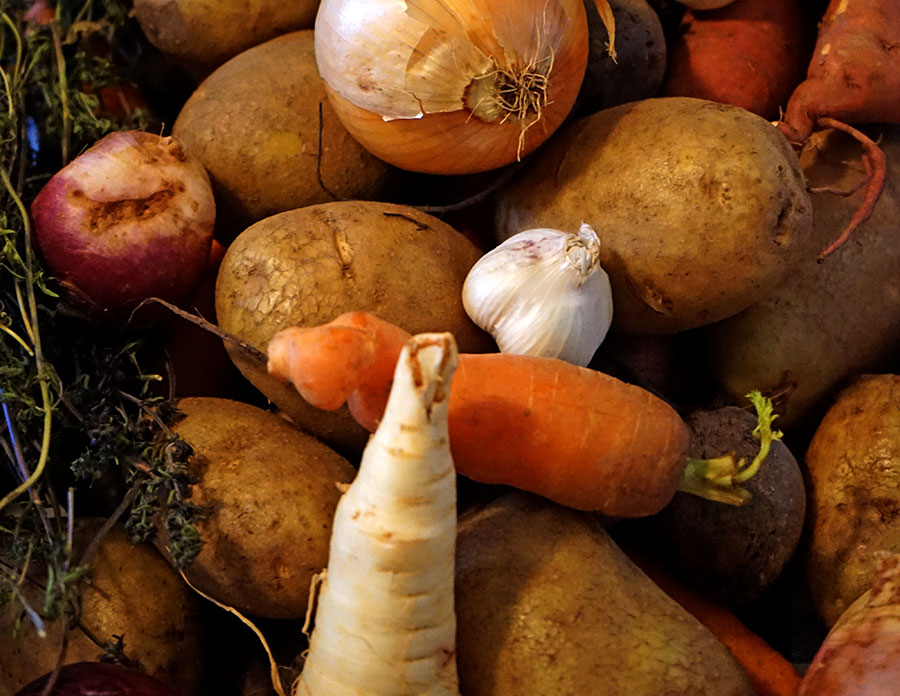Roasting
A great, simple cooking method to master in your kitchen is roasting. This way of cooking uses an oven and foods that have a solid structure (think meat and firm vegetables). Requiring a higher temperature (400°F and above), roasting can create a browned, flavorful “crust” on the outside of the food being cooked.
Typically done in an open, uncovered pan, the food being roasted is usually coated with a fat of some type (like vegetables tossed in olive oil) which keeps it from drying out.
Roasting takes advantage of the natural sugars inside of food and gives them a sweeter, more concentrated taste. Many cooks still refer to this as “caramelization”, however that’s a distinctly different reaction, involving higher temperatures and exclusively sugars. Complex processes called ‘Maillard reactions’ are responsible for giving roasted food, especially meats, their toasty brown color and sweet, caramel-like flavours, elevating the taste.
Named after French chemist Louis-Camille Maillard, who first identified the non-enzymatic browning in a 1912 research paper, they are a series of chemical reactions between amino acids and reducing sugars. They enhance the colors and flavours in foods like browned meats, roasted coffee beans, and the darkened crusts of baked goods.
Of course, roasting is also used for meats—after all we call it roast beef, or roast chicken! The Maillard reactions give that crispy exterior and beautifully browned skin on meats.
This month we chose some fall vegetables to roast as there are an abundance to choose from. Ideally firm vegetables work well for roasting, but even more delicate choices like green beans or broccoli are enhanced by this simple method of cookery. All you need is an oven, your vegetables, oil and seasonings, and a simple pan. Let’s eat!
Photos & words by Cheryl Young, Laura Weatherbie
Roasted Vegetables
Ingredients
Root vegetables (potatoes, carrots, beets, parsnips, sweet potatoes, turnips, rutabagas)
Brussels sprouts
Onions (white and red)
Garlic
Olive oil
Salt
Pepper
Herbs (we used Herbes de Provence & summer savoury)
Preparation
Preheat oven to 400°F.
Scrub root vegetables well. Peel potatoes, sweet potatoes, and other heavier skinned vegetables if desired. We chose to not peel our carrots, parsnips, and beets but gave them a thorough scrub. Peel outer skins of onions, and lightly brush garlic bulb to remove loose outer skins. Clean Brussels sprouts.
Handy tip: if you peel your vegetables, wash them first and then freeze the skins. You can always boil these to make a vegetable stock that will add flavour to soups, or gravy.
Chop root vegetables into even sized chunks (½ inch to ¾ inch works well). You can slice the denser vegetables like beets and turnips as they will take longer to cook. Note: slice beets last, as their flesh will quickly colour your cutting board!
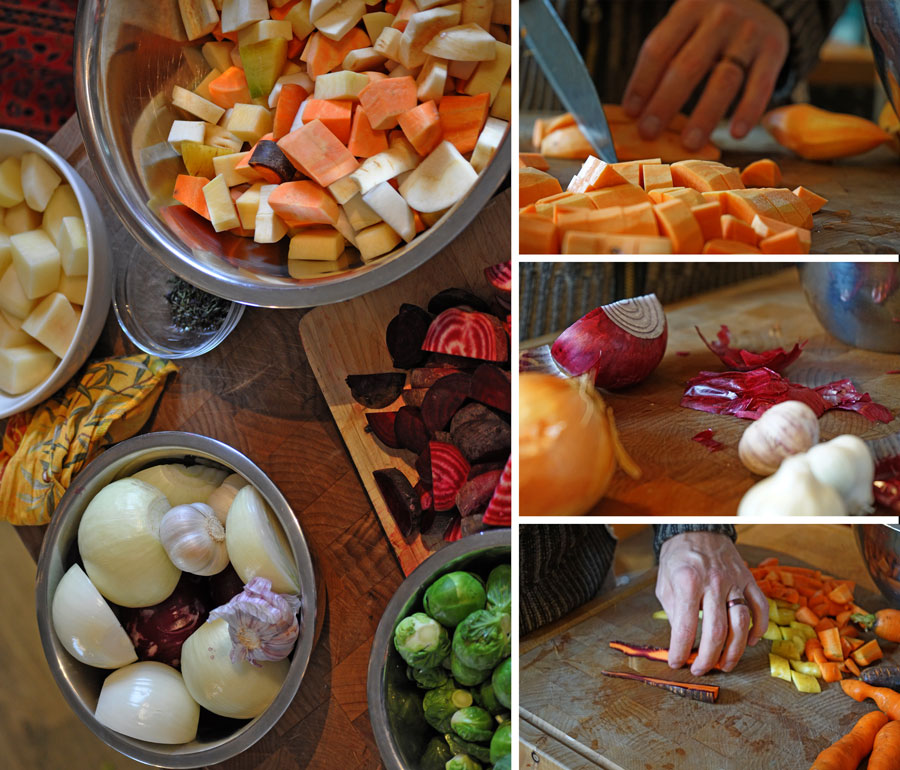
Place vegetables in a large bowl, drizzle with a generous amount of olive oil, season with salt, pepper, and herbs. Toss to cover the vegetables well. We chose to toss the beets separately (we didn’t want all the vegetables to be a lovely pink).
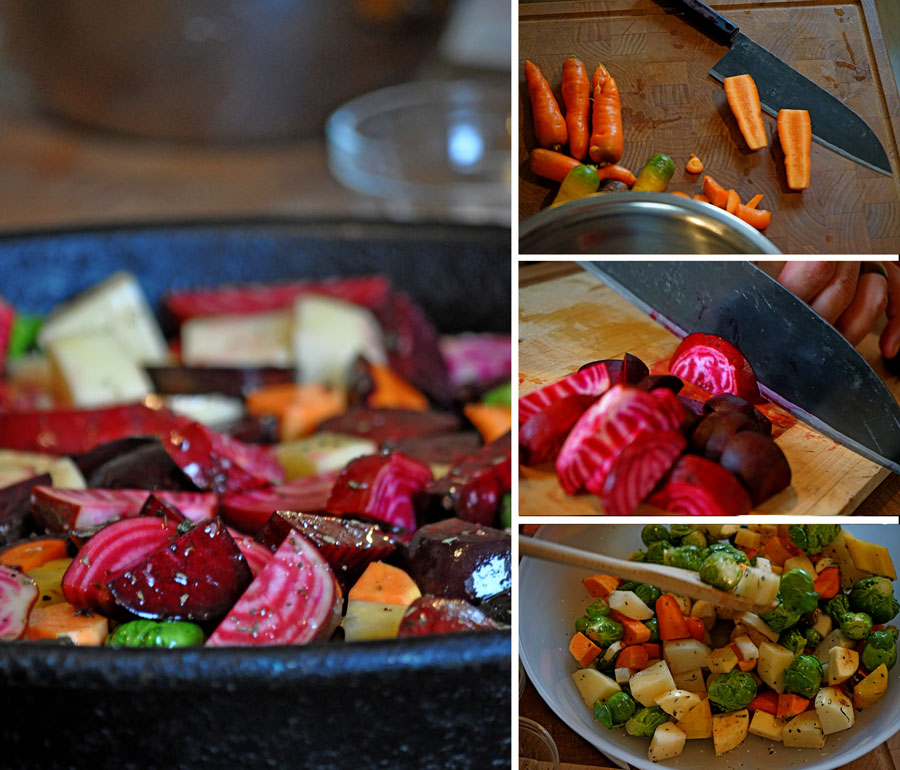
Spread on a large cookie sheet (preferably one with a rim). Make sure that there is room around the vegetables, don’t crowd them or they will steam rather than roast.
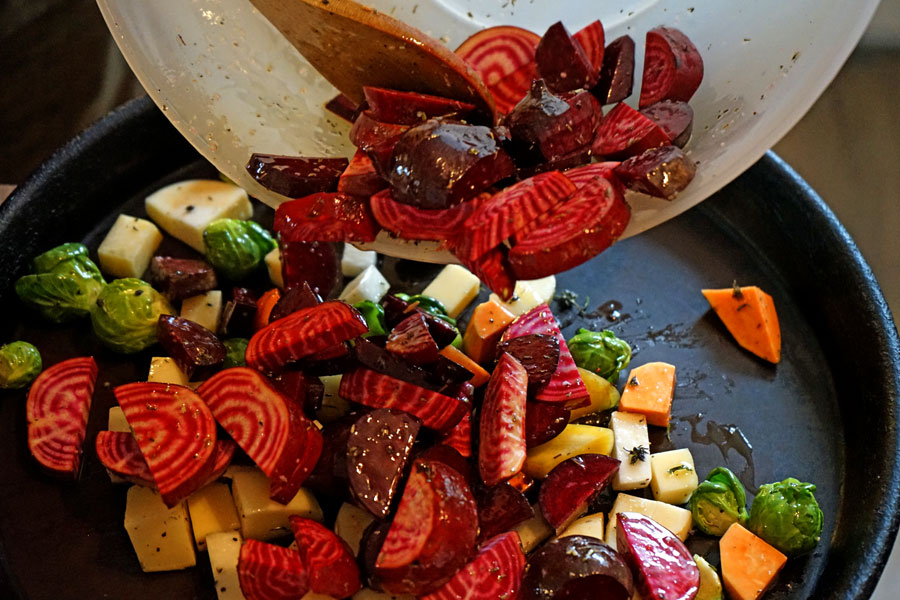
Pop the sheet into your preheated oven for 30-40 minutes. Check and stir the vegetables every 10 to 15 minutes. Continue roasting until the vegetables are easily pierced with a fork or knife and they are showing crispy bits at the tips and edges. Enjoy!
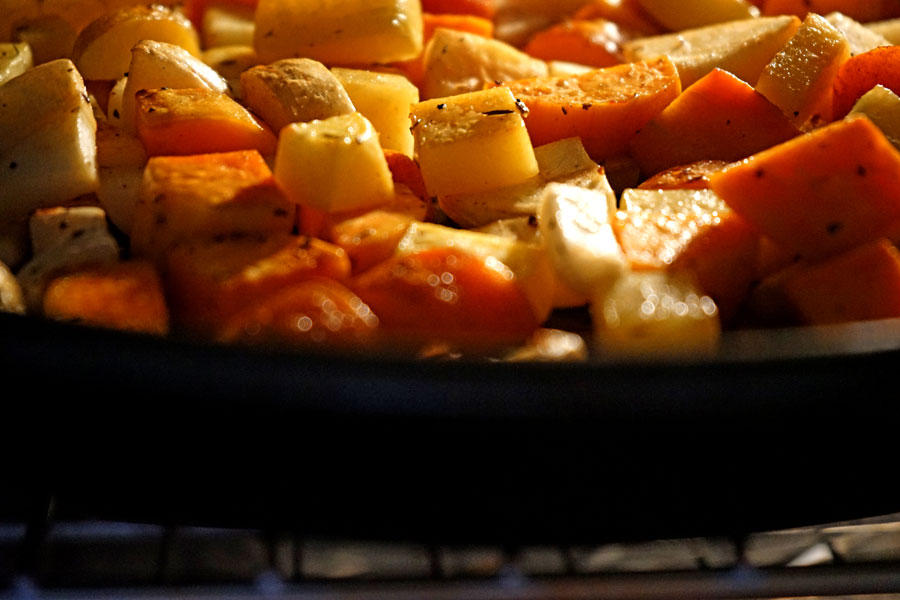
- FOOD HISTORY CORNER - July 6, 2020
- NEWSLETTER SIGNUP - March 24, 2020
- WOMEN’S DAY 2020 - March 1, 2020
- FOOD HISTORY CORNER - March 1, 2020
- ICYMI - March 1, 2020
- UPDATE ON CHARLOTTETOWN FOOD COUNCIL - February 1, 2020
- ICYMI - February 1, 2020
- FOOD HISTORY CORNER - February 1, 2020
- ICYMI - January 1, 2020
- THE SALTY CHEF - December 2, 2019

